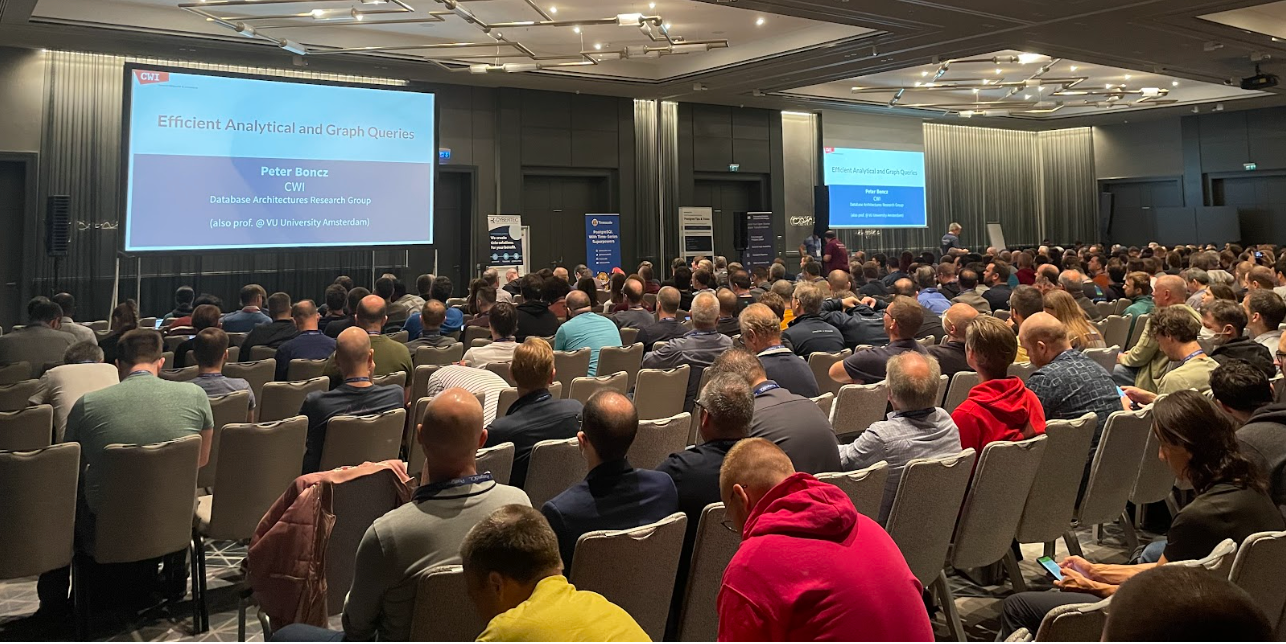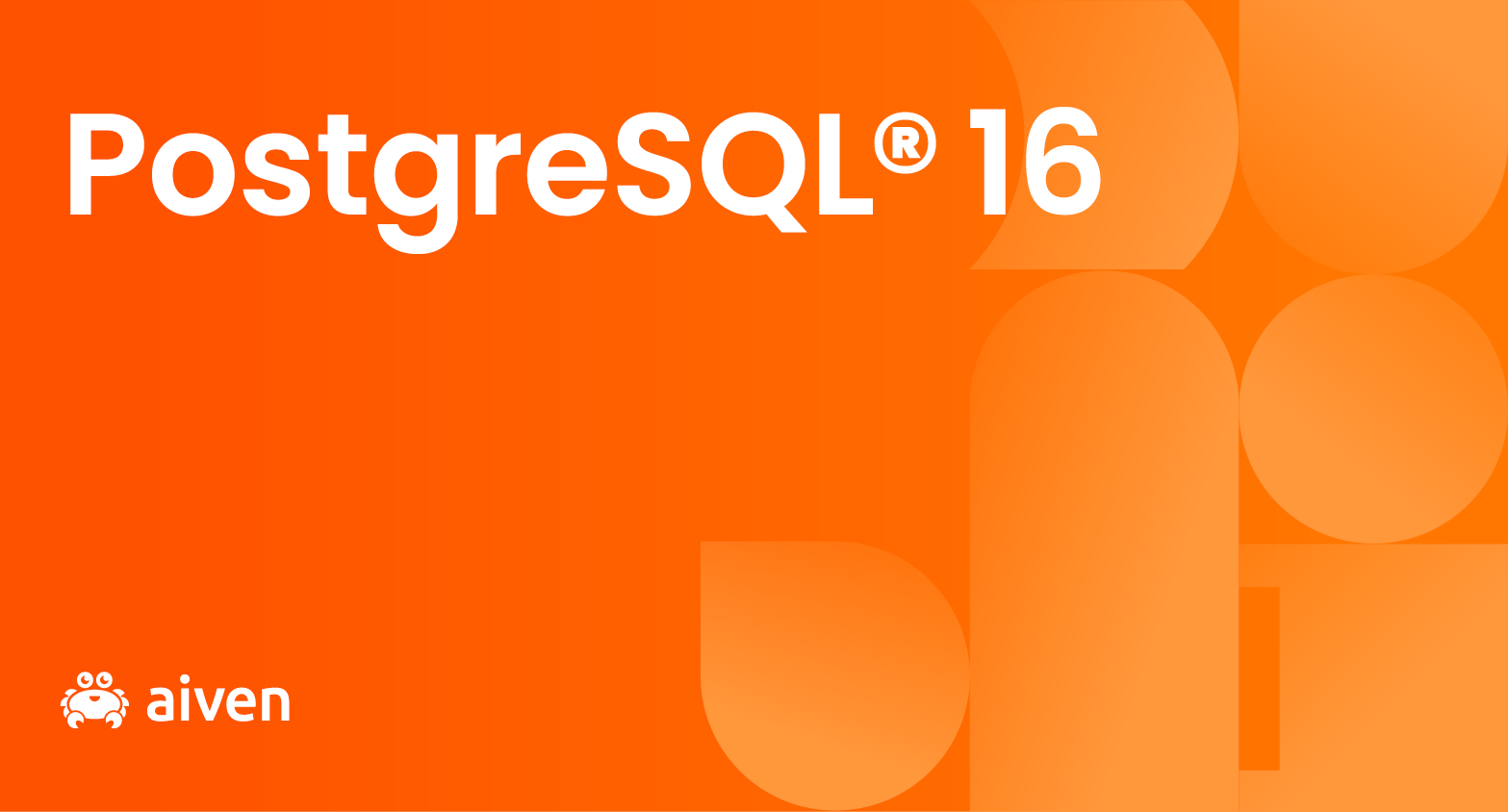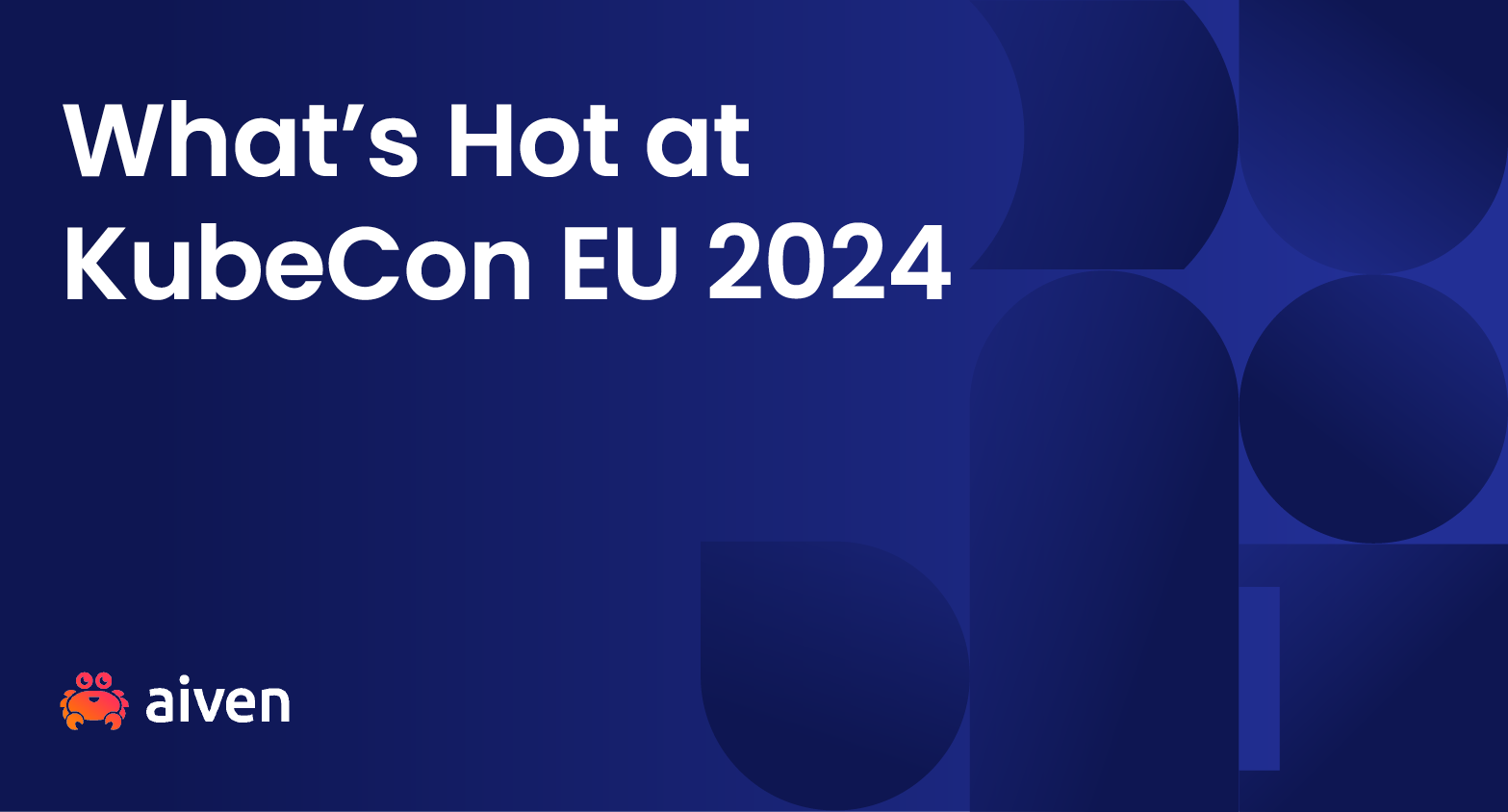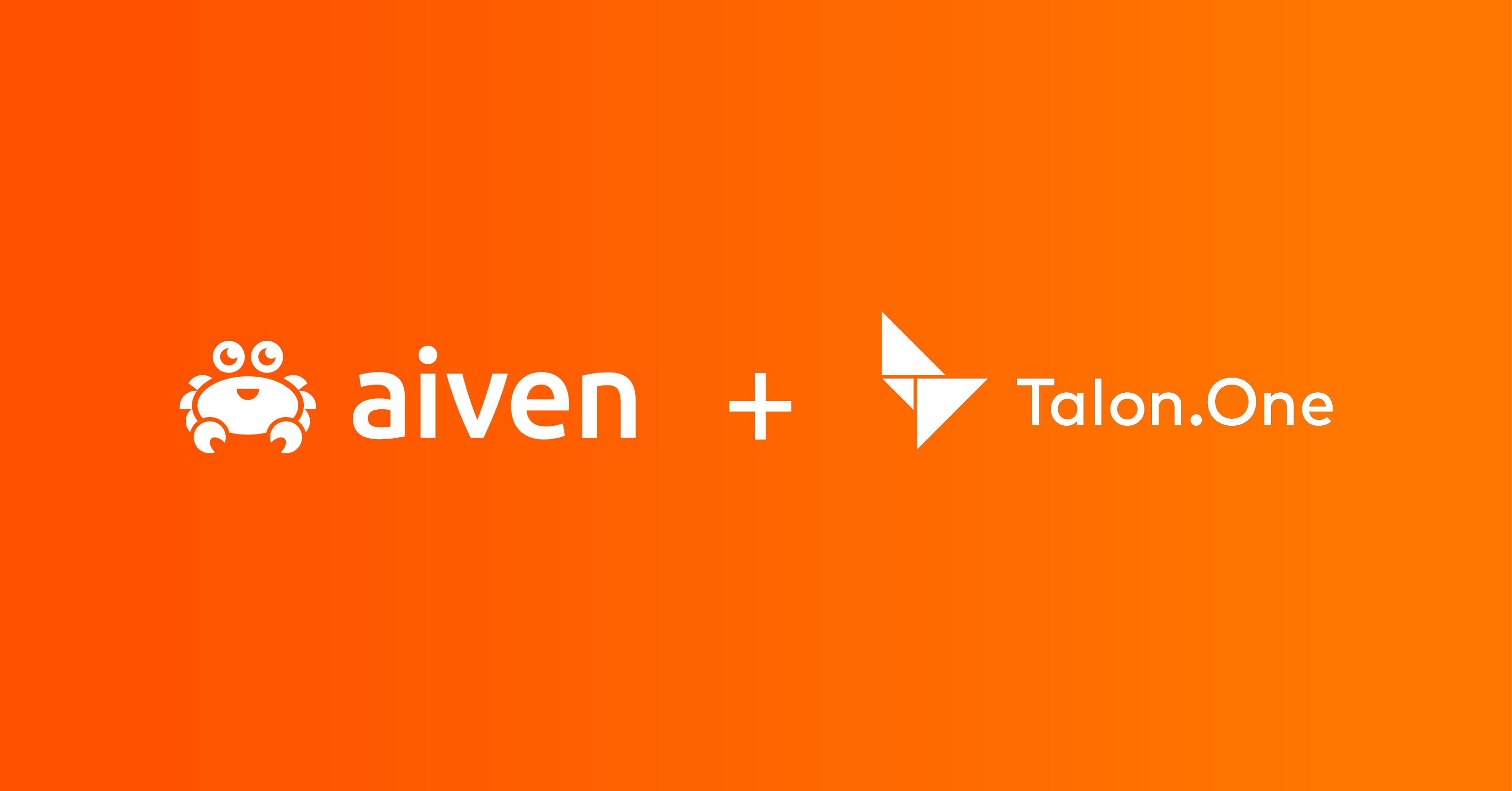Nov 3, 2022
PG Conf EU 2022 in a nutshell
PG Conf EU 2022 was a blast! Our team wrote this recap highlighting our favorite sessions and trends in the PostgreSQL® community we observed.
It’s been a busy events season for our team so far! And of course, we couldn’t miss out on the 12th annual PostgreSQL Conference in Europe that took place on October 25-28 in Berlin, Germany. Our team ventured out to meet the Postgres community (in-person, for the first time in a while!), give talks, and participate in exciting discussions around Aiven for PostgreSQL® use cases and latest developments. In case you didn’t attend the event or already miss the best moments, we’ve picked out our favorite sessions below, listed in chronological order!
Trends in the PostgreSQL® community
Technical events like PGConf EU are typically packed with in-depth content that helps us discover trends and understand the inner workings of the tool. Discussions about advanced observability, performance improvements and tooling proliferated in and out of the session rooms.
PostgreSQL® extensions deserve a special shoutout! We continuously see new ones being added or improved, making developers and DBAs lives easier in terms of functionality, backups or migration.
One specific trend we observed about the PostgreSQL® community: the number of active users, participants in public forums, and contributors is steadily increasing. Activities like Google Summer of Code are helping a wider audience get involved in PostgreSQL®, providing the project with a fresh and innovative pair of eyes and hands.
Keynote: Efficient Graph Analysis with SQL/PGQ
It wouldn’t be an event recap if we didn’t start with a keynote, would it? Luckily, the keynote at PG Conf EU 2022 was exceptional! Peter Boncz kicked off the conference with an interesting discussion on efficient analytical and graph queries in relational database systems. Specifically, he deep dived into SQL/PGQ, which will add property graph query support in the upcoming SQL:2023 standard.
On a similar subject, our Senior Developer Advocate, Francesco Tisiot, showed how valuable a graph data approach can be for managing service metadata, and how PostgreSQL® recursive queries can help us with that. This is part of the metadata parser project, which is open source and available on GitHub.
BRIN Improvements and new opclasses
Tomas Vondra’s talk on BRIN (Block Range Index) gave us some really interesting insights. Firstly, Tomas explained how BRIN indexes work to those who are new to them, and then proceeded to share the recent features that came out in PostgreSQL® 14, specifically the minmax-multi and bloom opclasses - those are clever tricks to make BRIN indexes more useful! Naturally, Tomas ended the talk with a demo and discussion on the future ideas for improving the indexes even more. We hope many of you will look into this area of PostgreSQL® and contribute with your ideas!
PostgreSQL® at GitLab.com
For those who are hungry for some PostgreSQL® use cases, the one presented by Alexander Sosna and Jose Finotto from GitLab was totally worth listening to. Alexander and Jose particularly focused on the specific problems with monitoring and how PostgreSQL® statements such as pgexporters and pg_stats can be used for monitoring.
If you’ve listened to their PGConf.DE 2022 talk, you might be interested to know the outcome of the in-flight decomposition project where they took a huge database and were able to divide workloads and serve them in appropriately sized instances.
Party tricks for PostgreSQL®: perf, ftrace and bpftrace
Dmitrii Dolgov walked us through a very fast-paced tour of the possibilities offered by perf, bpftrace and ftrace. Those tools can be seen as low-level magic, but Dmitrii demonstrated simple one-liners and explained how they work, including a presentation of the kernel infrastructure.
Being able to captivate an audience with such an in-depth yet fast-paced technical talk is quite a feat, and this was probably one of the most compelling talks for our team! (Presumably, we’re biased since our PostgreSQL® Developer, Ronan Dunklau, talked about the same tools on the last conference day 😉).
Neon, cloud-native storage backend for PostgreSQL®
We were curious to listen to Heikki Linnakangas’ technical presentation on the differences between his new product, Neon, and PostgreSQL®. Neon can be seen as an open-source competitor to Aurora, and it offers very unique features such as immediate branching and flashback queries. For the sake of keeping it short, we won’t get into an in-depth architectural overview here (although it was interesting to hear!). What we found particularly fascinating was the way Neon stores and indexes WALs, which makes it possible to rebuild any block at any point in time! This can potentially serve some great use cases, such as restoring only specific blocks, speeding up the backup and/or recovery process, and more.
MVCC Unmasked
If you didn’t know about MVCC (multiversion concurrency control) before, Bruce Momjian's talk was particularly helpful as it explored one of the most fundamental architectural decisions of PostgreSQL®. A good chunk of the talk was dedicated to the basics of MVCC, which despite being a complex topic Bruce managed to make palatable to the audience, taking questions as he went. Bruce finished the talk by explaining briefly how the more complicated parts of MVCC work (cmin, cmax, HOT updates, VACUUM) but keeping his very entertaining tone. We recommend checking out the slides to learn more.
Implementing failover of logical replication slots in Patroni
This talk by Alexander Kukushkin presented a nice trick, which is that all the infrastructure for maintaining logical replication slots on a standby is already here! It’s a hidden PostgreSQL® feature, in the sense that it’s not properly documented and it doesn’t provide you with any way of creating the logical replication slot, but it proves to be really useful in high availability scenarios.
Full Page Writes in PostgreSQL® - Critical, Evil or Both - Why you should care and how to optimize
Grant McAlister provided us with an extensive set of benchmark results showing how different PostgreSQL® tuning parameters can reduce the amount of full page writes, and how they can be detrimental to the overall performance of the system. One of the most interesting things he mentioned was how full page writes tend to have some sort of snowball effect, with more of them generating more WAL entries, which in turn tends to trigger checkpointing more often, which in turn makes full page writes more likely.
Reach a wider audience with your PostgreSQL content
How can you provide a service to the ENTIRE PostgreSQL community during a talk? Ask Claire Giordano. In “How to make your Postgres blog posts reach a ton more people“ she shared tips, checklist and, in general, food for thought on how little details can get a piece of content to a wider audience.
Honorable mentions
The three days of conference were packed with excellent technical content, all about PostgreSQL®. Naturally, we couldn’t include everything, but it’d be a shame not to mention the breakfast organized by Postgres Women. Aiven was one of the sponsors this year and we were lucky to meet some amazing women in the Postgres community!
It was also great to see some more familiar faces at the event. Some of the recent Uptime speakers also presented at this Postgres conference, so shout out to Henrietta Dombrovskaya, Karen Jex, Kirk Roybal!
Sadly, the conference talks weren’t recorded, but the slides are already available for almost every talk - be sure to check them out. We’ll be looking forward to the next PGConf EU event, so until next time!
Table of contents
- Trends in the PostgreSQL® community
- Keynote: Efficient Graph Analysis with SQL/PGQ
- BRIN Improvements and new opclasses
- PostgreSQL® at GitLab.com
- Party tricks for PostgreSQL®: perf, ftrace and bpftrace
- Neon, cloud-native storage backend for PostgreSQL®
- MVCC Unmasked
- Implementing failover of logical replication slots in Patroni
- Full Page Writes in PostgreSQL® - Critical, Evil or Both - Why you should care and how to optimize
- Reach a wider audience with your PostgreSQL content
- Honorable mentions
Stay updated with Aiven
Subscribe for the latest news and insights on open source, Aiven offerings, and more.







